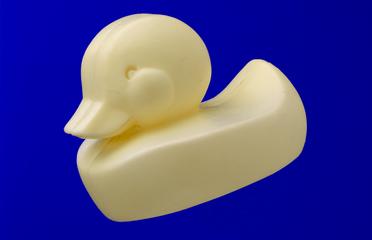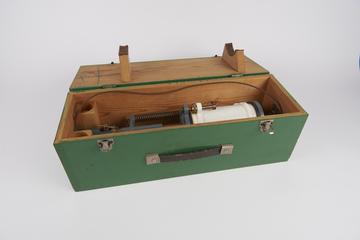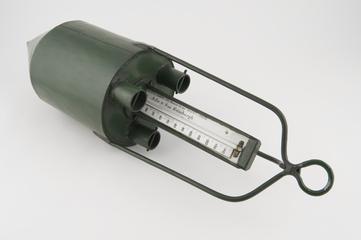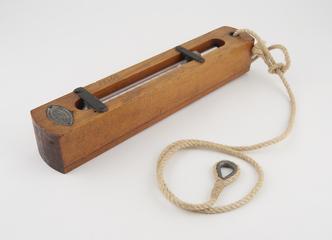
Sample of Globigerina ooze collected by HMS Challenger, 1872-1876
- Made:
- 1872-1876 in Pacific Ocean






Sample of Globigerina ooze collected from the ocean floor by the crew of the HMS Challenger expedition, led by naturalists John Murray and Charles Wyville Thompson, 1872-1876. The sample is labelled: ‘Globigerina ooze with many radiolarians. Midway between Hawaii and Tahiti. Depth 2425 fathoms’. Accompanying label states the sample was collected at station 271. Globigerina is a genus of planktonic Foraminifera; shells of these tiny animals dominate vast areas of the deep sea floor.
This clay sediment sample was collected from the ocean bed over 130 years ago by scientists on the HMS Challenger expedition – the world’s first serious investigation of the deep-sea environment. Research on the samples continues to this day and has yielded many important insights into the Earth’s past climates.
The British naval ship – on loan to the Royal Society of London – left Portsmouth in December 1872 to embark on a three-and-a-half-year voyage of discovery. By the time Challenger returned it had travelled nearly 130,000 km and stopped at 362 places to collect hundreds of tonnes of samples from the sea floor. John Murray, one of the scientists on board, described the achievements of the voyage as one of ‘the greatest advances in the knowledge of our planet’.
Scientists aboard Challenger dredged the ocean floor with the aid of sounding tubes, net bags and very long rope. ‘Sometimes a hempen line eight miles in length was out astern of the ship when trawling,’ declared Murray. Taking samples could be a lengthy process. Murray estimated a trawling in 3000 fathoms often used to take 12 to 14 hours.
Murray was given the job of examining the sediments on board and noting their general physical characteristics in a journal. Like the other scientists, he was surprised to discover that the seabed is made from annual layers of fine sediment that contain the skeletons of tiny sea creatures. Moreover, the number and chemical make-up of the fossils appeared to vary, depending on whether they had been collected from a cold or warm area. ‘The size and thickness of animal shells are subject to great changes and salinity in the waters,’ wrote Murray.
Working out where the fossils were positioned within layered sea sediment allows scientists to count back in time and work out the temperature of oceans in the past.
Details
- Category:
- Oceanography
- Object Number:
- 1893-112 Pt6
- Materials:
- clay (unfired)
- Measurements:
-
overall: 15 mm x 140 mm x 140 mm, 147g
- type:
- geology sample
- credit:
- Royal College of Science (Geological Laboratory)




